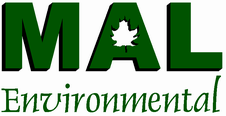Isocyanates
are liquid or solid aromatic and aliphatic compounds containing
the isocyanate group (-NCO) that can off-gas vapours. Isocyanates
are the raw materials that form many derivatives products, including
polyurethane. Polyurethane polymers are widely to manufacture flexible
and rigid foams, thermoplastics, spandex fibres, pesticides, paints
and varnishes. Isocynates are also used in many components of the
automobile industry, auto body repair as well as in building insulation
materials. Exposure to isocyanates usually occurs through inhalation
of isocyanate vapours or mists created as part of a process, during
thermal degradation of polyurethane products or during the application
of sprayed applied polyurethane foam insulation.
Isocyanates are not absorbed through the skin but contact may cause
irritation. Inhalation of isocyanates can cause an irritantation
of the respiratory tract, asthma-like symptoms, such as chest tightness,
cough, wheeze and shortness of breath. These symptoms may occur
up to several hours after cessation of exposure. Chronic exposure
can cause liver and kidney dysfunction. |
Currently,
there are no regulations pertaining to isocyanates on construction
projects. Industrial processes involving isocyanates are regulated
under the Ontario Occupational Health & Safety Act, R.S.O. 1990,
Regulation 842 as amended by O.Reg. 108/04, Designated Substance
– Coke Oven Emissions. The transport of the waste to the disposal
site is controlled by the federal Transportation of Dangerous Goods
Act, 1992. |



